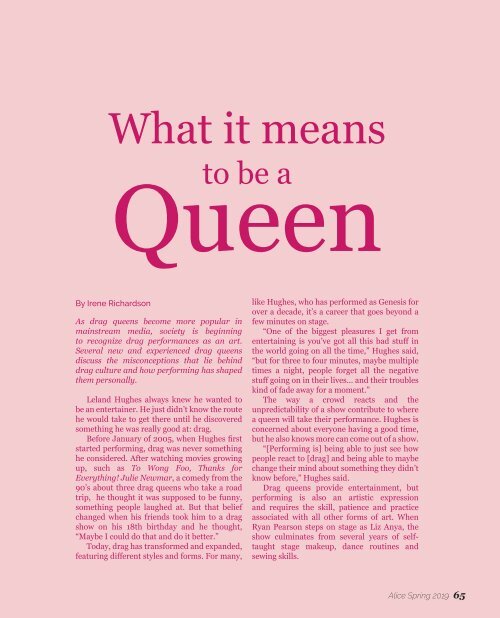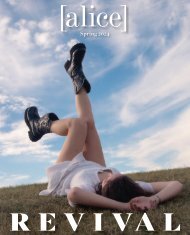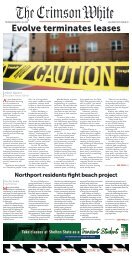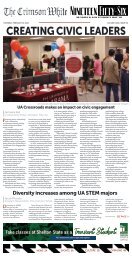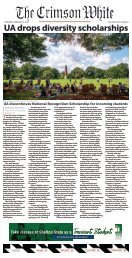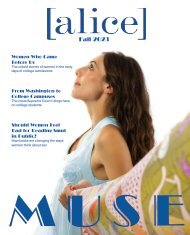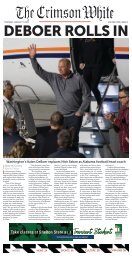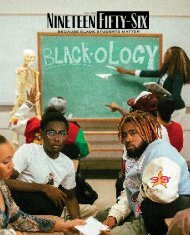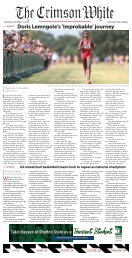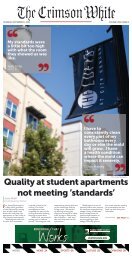Alice Vol. 4 No. 2
Published by UA Student Media Spring 2019.
Published by UA Student Media Spring 2019.
You also want an ePaper? Increase the reach of your titles
YUMPU automatically turns print PDFs into web optimized ePapers that Google loves.
By Irene Richardson<br />
As drag queens become more popular in<br />
mainstream media, society is beginning<br />
to recognize drag performances as an art.<br />
Several new and experienced drag queens<br />
discuss the misconceptions that lie behind<br />
drag culture and how performing has shaped<br />
them personally.<br />
Leland Hughes always knew he wanted to<br />
be an entertainer. He just didn’t know the route<br />
he would take to get there until he discovered<br />
something he was really good at: drag.<br />
Before January of 2005, when Hughes first<br />
started performing, drag was never something<br />
he considered. After watching movies growing<br />
up, such as To Wong Foo, Thanks for<br />
Everything! Julie Newmar, a comedy from the<br />
90’s about three drag queens who take a road<br />
trip, he thought it was supposed to be funny,<br />
something people laughed at. But that belief<br />
changed when his friends took him to a drag<br />
show on his 18th birthday and he thought,<br />
“Maybe I could do that and do it better.”<br />
Today, drag has transformed and expanded,<br />
featuring different styles and forms. For many,<br />
like Hughes, who has performed as Genesis for<br />
over a decade, it’s a career that goes beyond a<br />
few minutes on stage.<br />
“One of the biggest pleasures I get from<br />
entertaining is you’ve got all this bad stuff in<br />
the world going on all the time,” Hughes said,<br />
“but for three to four minutes, maybe multiple<br />
times a night, people forget all the negative<br />
stuff going on in their lives… and their troubles<br />
kind of fade away for a moment.”<br />
The way a crowd reacts and the<br />
unpredictability of a show contribute to where<br />
a queen will take their performance. Hughes is<br />
concerned about everyone having a good time,<br />
but he also knows more can come out of a show.<br />
“[Performing is] being able to just see how<br />
people react to [drag] and being able to maybe<br />
change their mind about something they didn’t<br />
know before,” Hughes said.<br />
Drag queens provide entertainment, but<br />
performing is also an artistic expression<br />
and requires the skill, patience and practice<br />
associated with all other forms of art. When<br />
Ryan Pearson steps on stage as Liz Anya, the<br />
show culminates from several years of selftaught<br />
stage makeup, dance routines and<br />
sewing skills.<br />
<strong>Alice</strong> Spring 2019 65


